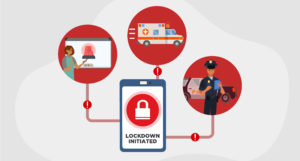October marks an important month for educators and communities to reinforce their commitment to bullying prevention, student wellbeing, and school safety. As Bullying Prevention Month, it highlights the essential role educators play in fostering safe, supportive learning environments.
This month serves as a pivotal reminder of the proactive steps educators can take to protect and support students. Cyberbullying, in particular, presents a significant challenge in the context of student wellbeing and school safety. Unlike traditional bullying, it extends beyond classroom walls through social media and online channels.
Key challenges include:
- Cyberbullying’s persistent nature across various platforms.
- Severe impacts on student mental health.
- Rapid technological advancements outpacing educators’ response capabilities.
Schools must develop comprehensive strategies to address all forms of bullying, including cyberbullying, to maintain a safe educational environment. This includes recognizing the connection between bullying and school violence—and the role of behavioral threat assessments in mitigating such threats.
Relationship between Bullying and School Violence
The 2019 report by the National Threat Assessment Center offers valuable insights into the link between bullying and school violence. Notable findings include:
- 80% of attackers in targeted school violence incidents had experienced bullying.
- Over half of these individuals faced persistent bullying.
While most students who experience bullying do not resort to violence, these statistics underscore the importance of addressing bullying proactively. Schools must implement effective strategies to identify and support students who are bullied, reducing potential risks of violence.
Implementing Behavioral Threat Assessment and Management
In response to rising concerns about school violence stemming from incidents of cyberbullying, threat assessment and management protocols are increasingly adopted. Key aspects include:
- Importance of adopting threat assessment protocols to ensure school safety.
- State mandates for implementing these protocols.
- Need to understand students’ digital interactions as part of the assessment process.
To be truly effective, these protocols must integrate insights from students’ online activities, providing early warnings of potential threats or bullying behaviors.
The Imperative of Bullying Prevention and Early Intervention
Addressing cyberbullying effectively requires a strong focus on prevention and early intervention. Key strategies include:
- Vigilance in identifying signs of cyberbullying, which are often not visible to adults.
- Creating a culture of awareness and support within schools and communities.
- Promoting the overall wellbeing of students by recognizing and addressing bullying early.
- Understanding that bullying can lead to violence, making early intervention critical.
Educators play a pivotal role in these efforts to prevent violence and support student wellbeing.
Improve Student Wellbeing with Raptor StudentSafe
StudentSafe allows all staff to log low-level concerns about a student that when presented in this secure, centralized software, gives school counselors a more complete view of a student who may need help. The ability to intervene at the earliest stages increases the opportunity for positive outcomes.
Learn how Raptor StudentSafe can support your student wellbeing protocols. Schedule a demo today.
Related Resources
Learn more about enhancing student wellbeing in Raptor’s free Guide to K-12 Student Wellbeing.






